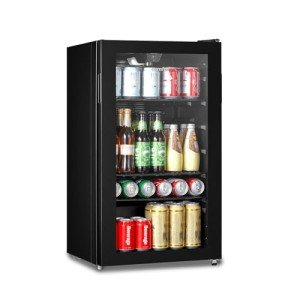The Role and Evolution of Commercial Coolers in the Modern Marketplace
In the bustling landscape of modern commerce, the function of commercial coolers can not be overemphasized. These important pieces of devices are the backbone of various industries, from supermarkets and corner store to dining establishments and health care centers. This article explores the significance of commercial coolers, their types, advancements, and the effect they have on organization operations.
Intro to Commercial Coolers
Commercial coolers, also referred to as commercial refrigerators, are developed to maintain a constant and regulated temperature level environment for the storage of disposable goods. Unlike family refrigerators, commercial coolers are constructed to stand up to heavy usage and are equipped with features that ensure reliability and performance in high-demand settings. They are vital for protecting the quality and security of food, drinks, and other temperature-sensitive products.
Kinds Of Commercial Coolers
Cooled Display Cases
- Vertical Coolers: Commonly discovered in grocery stores and benefit stores, these systems permit clients to view and select products quickly.
- Horizontal Coolers: Often used for displaying beverages and small products, these systems can be either open or with glass doors.
Walk-in Coolers
- Walk-in Freezers: Large, room-sized systems designed for bulk storage of frozen items.
- Walk-in Coolers: Similar to walk-in freezers however maintain a higher temperature level, suitable for storing dairy, produce, and other perishables.
Undercounter Coolers
- Bar Coolers: Compact units created to fit under bar counters, perfect for keeping beverages and mixers.
- Preparation Coolers: Used in kitchens for storing ingredients and prepared foods.
Bottle Coolers
- Single-Door Coolers: Ideal for small spaces, these systems are typically utilized in workplaces and small retail settings.
- Multi-Door Coolers: Larger units with several compartments, appropriate for high-volume sales environments.
Reach-in Coolers
- Single-Door Reach-ins: Compact and effective, these units are ideal for small organizations and dining establishments.
- Double-Door Reach-ins: Offer more storage space and are appropriate for medium-sized operations.
Developments in Commercial Coolers
The innovation behind commercial coolers has actually advanced substantially throughout the years, resulting in more effective and sustainable options. Some notable developments include:
- Energy Efficiency: Modern coolers are developed to consume less energy, minimizing operational costs and environmental effect. Features like LED lighting, high-efficiency compressors, and advanced insulation contribute to this.
- Smart Technology: Many commercial coolers now come with smart functions, such as remote monitoring, temperature level informs, and automated defrost cycles. These innovations enhance functional efficiency and item safety.
- Eco-Friendly Refrigerants: The use of eco-friendly refrigerants, such as R-290 (propane) and R-600a (isobutane), is ending up being more prevalent, minimizing the carbon footprint of commercial coolers.
- Modification: Manufacturers are offering more adjustable alternatives, permitting organizations to tailor their coolers to particular requirements, such as size, design, and functions.
Influence On Business Operations
Commercial coolers play an essential function in numerous elements of business operations:
- Product Preservation: By keeping optimum temperature level conditions, coolers guarantee that products stay fresh and safe for consumption, reducing waste and enhancing customer complete satisfaction.
- Functional Efficiency: Efficient cooling systems reduce downtime and maintenance expenses, allowing organizations to concentrate on other important operations.
- Customer Experience: Well-maintained and visually pleasing coolers can enhance the shopping experience, encouraging customers to make purchases.
- Regulative Compliance: Commercial coolers help organizations fulfill health and wellness policies, making sure compliance and avoiding charges.
Frequently asked questions
Q: What is the distinction between a commercial cooler and a home refrigerator?
- A: Commercial coolers are developed for heavy usage and are developed with more robust materials and advanced functions to guarantee reliability and performance in high-demand settings. Household refrigerators, on the other hand, are designed for personal usage and are not equipped to handle the exact same level of usage or storage capacity.
Q: How can I guarantee my commercial cooler is energy effective?
- A: To make sure energy effectiveness, choose a cooler with an Energy Star ranking, usage LED lighting, preserve routine cleansing and maintenance, and consider clever features like remote tracking and automated defrost cycles.
Q: What are the advantages of utilizing environmentally friendly refrigerants in commercial coolers?
- A: Eco-friendly refrigerants, such as R-290 and R-600a, have a lower global warming capacity (GWP) and ozone depletion potential (ODP) compared to conventional refrigerants. This minimizes the ecological effect of commercial coolers and helps businesses fulfill sustainability goals.
Q: How typically should I clean up and maintain my commercial cooler?
- A: Regular cleansing and maintenance are essential for the ideal performance of commercial coolers. Retro Drinks Fridges is advised to clean the cooler at least as soon as a month and perform a thorough maintenance check every six months. This consists of checking the seals, cleaning the condenser coils, and ensuring the temperature level settings are accurate.
Commercial coolers are important in the modern market, offering important services that ensure the quality and safety of perishable items. With improvements in innovation and a growing focus on sustainability, these systems are ending up being more efficient and eco-friendly. By understanding the various kinds of commercial coolers and their effect on business operations, owners and supervisors can make educated choices that benefit both their operations and the environment.

